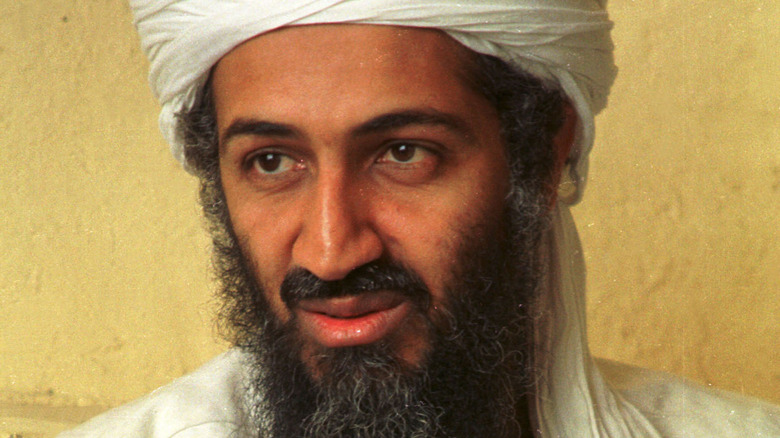The True Story That Inspired Zero Dark Thirty
A horrible terrorist attack occurs with the results being incalculable devastation in more than one city and a marked change in how a country views itself. It is a day that sears itself into the psyche of those who were there and people still think about to this day. As a result, a team of government officials doggedly track the mastermind of this horrific event for the better part of a decade. Eventually, there is a tense showdown that ends in a violent gunfight. The mastermind dies in a hail of gunfire and the story ends with the officials being grimly satisfied.
As much as this sounds like the adaptation of a Tom Clancy novel, it's from a true story about how the United States was able to track down the man who arranged 9/11, the worst terrorist attack on American soil. The movie is 2012's "Zero Dark Thirty," about the hunt for Osama Bin Laden, per IMDb. The story and its conclusion are real, but the characters portrayed (including the character played by Jessica Chastain, above) are fictional, combined, or fictionalized. There is a very good reason for that. Also, some people took issue with how certain things were shown.
Osama Bin Laden still has devotees who would avenge his death
The reason for the fictionalization of the people who were behind the manhunt for Osama Bin Laden (above) is that they are still active and serving in the field (via Slate). Facts about the actual people involved were changed, including background information. The casting director purposely hired actors who bore no physical similarities to the characters that they portrayed. All the better to allow the real individuals to keep operating in the background, protecting the country.
How does the movie version differ from real life? Jessica Chastain's character, Maya, is not real. Rather, she's a composite of several women who helped to track down Bin Laden. There are also liberties taken about how the U.S. was torturing their prisoners to try to get information, per Time. Some critics also misread the use of torture in the movie, according to The Atlantic. A 2013 Washington Post opinion piece by a CIA veteran explained that the torture methods that the film depicted were not based in reality — when Khalid Sheik Mohammed was waterboarded, the methods used were the same ones that American soldiers had experienced during their own training. In fact, waterboarding was eliminated in 2003, well before President Barack Obama, who helped spearhead the 2011 raid, was in office.
Ultimately, the movie, directed by Kathryn Bigelow, tells this story in a dramatic way, but people should not see it as a wholly factual retelling of the events that led to Bin Laden being killed in a raid in Pakistan.

